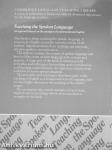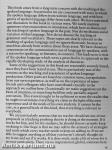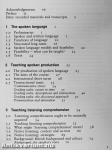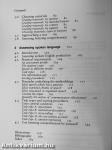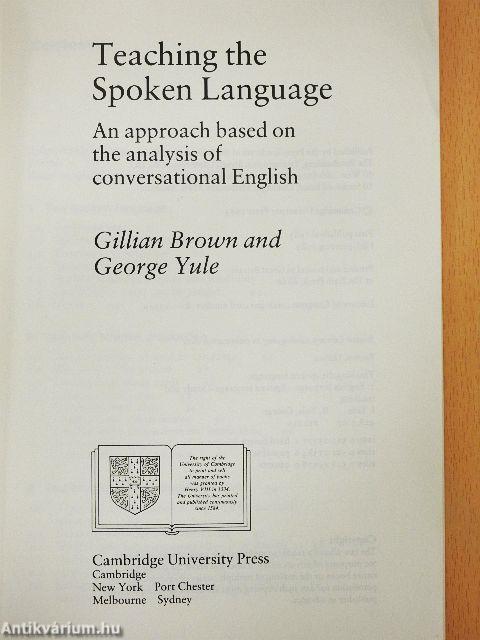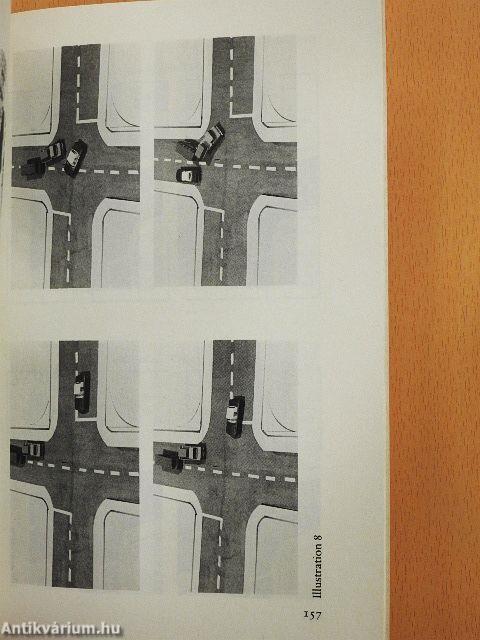1.104.175
kiadvánnyal nyújtjuk Magyarország legnagyobb antikvár könyv-kínálatát

VISSZA
A TETEJÉRE
JAVASLATOKÉszre-
vételek
Teaching the Spoken Language
An approach based on the analysis of conversational English
| Kiadó: | Cambridge University Press |
|---|---|
| Kiadás helye: | Cambridge |
| Kiadás éve: | |
| Kötés típusa: | Ragasztott papírkötés |
| Oldalszám: | 162 oldal |
| Sorozatcím: | Cambridge Language Teaching Library |
| Kötetszám: | |
| Nyelv: | Angol |
| Méret: | 23 cm x 15 cm |
| ISBN: | 0-521-27384-6 |
| Megjegyzés: | Fekete-fehér fotókkal, illusztrációkkal. |
naponta értesítjük a beérkező friss
kiadványokról
naponta értesítjük a beérkező friss
kiadványokról
Fülszöveg
cambridge language teaching library A series of authoritative books on subjects of central importance for all language teachers.
Teaching the Spoken Language
An approach based on the analysis of conversational English
This book is about teaching the spoken language. It presents in a highly accessible form the results of the authors' important research on teaching and assessing effective spoken communication.
The authors examipe the nature of spoken language and how it differs from written language both in form and purpose. A large part of the book is concerned with principles and techniques for teaching spoken production and listening comprehension. An important chapter deals with how to assess spoken language.
The principles and techniques described apply to the teaching of English as a foreign and second language, and are also highly relevant to the teaching of the mother tongue.
The accompanying cassette contains extracts from original source recordings which are... Tovább
Fülszöveg
cambridge language teaching library A series of authoritative books on subjects of central importance for all language teachers.
Teaching the Spoken Language
An approach based on the analysis of conversational English
This book is about teaching the spoken language. It presents in a highly accessible form the results of the authors' important research on teaching and assessing effective spoken communication.
The authors examipe the nature of spoken language and how it differs from written language both in form and purpose. A large part of the book is concerned with principles and techniques for teaching spoken production and listening comprehension. An important chapter deals with how to assess spoken language.
The principles and techniques described apply to the teaching of English as a foreign and second language, and are also highly relevant to the teaching of the mother tongue.
The accompanying cassette contains extracts from original source recordings which are transcribed as examples in the book.
iSf XV.
This book arises from a long-term concern with the teaching of the spoken language. In particular we are concerned with ways in which the spoken language differs from written language, and with how genres of spoken language differ from each other. We have restricted our discussion in this book in various ways. We rarely mention questions of pronunciation or intonation, which have so dominated the teaching of spoken language in the past. Nor do we discuss social variation within language. Nor do we discuss the teaching of grammar and vocabulary. These topics are clearly relevant to the teaching of spoken language and we ignore them only because so much has already been written about these areas. We have chosen to concentrate on the communicative use of language by speakers, with a reason for speaking, to listeners, in contexts. This leads us to a view of the spoken language which owes a great deal in its approach to the rapidly developing study of the analysis of discourse.
Some of the suggestions in this book are reasonably securely based, since they have been tested in use. This is particularly true of the sections on the teaching and assessment of spoken language production. Other parts are based on common sense, extrapolation from our own experience, as well as on the experience of many friends and colleagues who have contributed crucially to the approach we outline here. Occasionally we make suggestions on the basis of intuition, or some long-held but only partially-argued conviction. This avowal ought to be sufficient to warn the reader that he ought to scrutinise everything we claim in the light of his own experience and of the needs of his own students. It cannot be the case, in a general book of this kind, that everything is relevant to everybody.
We are particularly anxious that no teacher should see any of our proposals as attacking anything that he is doing at the moment. If it works for him, and for his students, he should almost certainly keep on doing it. Our hope is that we may add to the armoury of strategies and tools which every teacher needs to keep on adding to. If we are able to suggest anything at all that you haven't already thought of, try it out and see if it works. If it does work, make a bit of room for it in your curriculum. There are no inspirational, global, solutions here. Vissza
Témakörök
- Idegennyelv > Idegennyelvű könyvek > Angol > Pedagógia
- Idegennyelv > Idegennyelvű könyvek > Angol > Nyelvészet
- Pedagógia > Tantárgypedagógia > Idegen nyelv > Angol
- Nyelvészet > Idegen nyelvek > Tanítása
- Idegennyelv > Nyelvtanulás > Nyelvtanítás > Nyelvpedagógia
- Idegennyelv > Nyelvtanulás > Nyelvtanítás > Módszertan, oktatói, tanulói anyagok, segédletek






